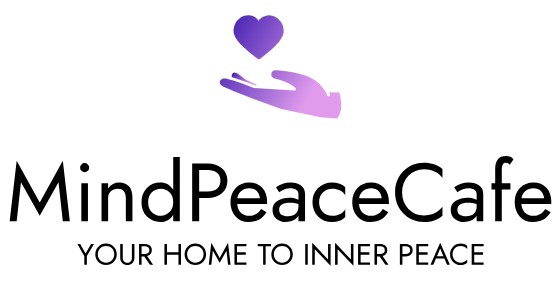Unleashing the Power of Movement for a Life of Liberation and Freedom

Yoga, an ancient practice that has been revered for its physical, mental, and spiritual benefits, has been gaining popularity in recent years. But what if we told you that yoga can be a powerful tool for something more profound – releasing karma? The concept of karma, often misunderstood, is a complex web of actions and their consequences that can affect our lives in profound ways. As we embark on this journey of self-discovery and spiritual growth, it’s essential to understand the intricacies of karma and how yoga can be used to unlock its secrets.
In this article, we’ll delve into the spiritual and philosophical roots of karma, exploring the psychological and neuroscientific aspects that make it a tangible force in our lives. We’ll then examine the connection between yoga and karma release, highlighting the science behind yoga’s impact on emotional regulation and karmic release. By understanding how yoga affects the brain and body, we can harness its power to release emotional blockages and promote a sense of liberation.
Through a series of yoga sequences and tips for personalizing your practice, we’ll guide you on a journey of self-discovery and karmic release. By embracing the journey of yoga and karma release, you’ll be able to unlock the power of movement and breathe new life into your spiritual practice. So, join us on this transformative journey, and discover the profound effects of yoga on karma release.
1. Understanding the Concept of Karma
Karma, a concept rooted in Eastern spirituality, is often misunderstood as a simplistic notion of ‘good deeds’ versus ‘bad deeds.’ However, the concept of karma is far more complex and nuanced. In essence, karma refers to the idea that every action, thought, and intention sets in motion a chain of cause and effect, influencing our future experiences and circumstances. This concept is deeply intertwined with the principles of reincarnation, where the soul reincarnates into a new life, carrying with it the accumulated karma from past lives.
The science behind karma is rooted in psychological and neuroscientific principles. Research has shown that our thoughts, emotions, and actions shape our brain’s neural pathways, influencing our behavior and experiences. This means that our intentional actions, including those driven by kindness, compassion, and empathy, can rewire our brains to create a more positive and harmonious reality. Conversely, actions driven by negativity, greed, and hatred can perpetuate cycles of suffering and distress.
In understanding the concept of karma, it’s essential to recognize that it’s not about punishing or rewarding individuals, but rather about creating a sense of balance and harmony within the universe. By acknowledging the interconnectedness of all actions, we can begin to take responsibility for our own karma, making conscious choices that promote personal growth, spiritual evolution, and a more compassionate world.
What is Karma?
Karma, a concept rooted in ancient Eastern spiritual traditions, is often associated with the idea of cosmic justice, where every action has a consequence. However, the concept of karma is far more nuanced and multifaceted. In Hinduism, karma is seen as a accumulation of actions, thoughts, and intentions that influence an individual’s future experiences and circumstances. The Bhagavad Gita, a revered Hindu scripture, describes karma as a cycle of action and reaction, where every action sets in motion a chain of cause and effect.
In Buddhism, karma is viewed as a fundamental aspect of the natural world, governing the cycle of birth, death, and rebirth. The concept of karma is closely tied to the idea of samsara, the cycle of suffering and rebirth, and is seen as a means to achieve liberation from this cycle. The Buddhist concept of karma emphasizes the importance of intention and motivation, highlighting that actions driven by wisdom, compassion, and kindness can lead to positive consequences.
In essence, the concept of karma is a complex and multifaceted phenomenon that is deeply rooted in spiritual and philosophical traditions. By understanding the spiritual and philosophical roots of karma, we can gain a deeper appreciation for the intricate web of cause and effect that governs our lives. This understanding can inspire us to live more mindfully, making conscious choices that promote personal growth, spiritual evolution, and a more harmonious world.
The Science Behind Karma
The concept of karma is often viewed as a spiritual or philosophical phenomenon, but is it also rooted in psychological and neuroscientific principles? Research suggests that our thoughts, emotions, and actions shape our brain’s neural pathways, influencing our behavior and experiences. This concept, known as neuroplasticity, highlights the brain’s ability to reorganize itself in response to new experiences and learning. When we engage in positive actions, such as kindness and compassion, our brains release neurotransmitters like dopamine and oxytocin, which reinforce positive behaviors and promote feelings of well-being.
On the other hand, negative actions and emotions can perpetuate cycles of stress and anxiety, leading to changes in the brain’s structure and function. This can result in a greater propensity for negative behaviors, creating a self-reinforcing cycle of negativity. The science behind karma suggests that our intentional actions, whether positive or negative, can shape our brain’s neural pathways and influence our future experiences. By understanding the psychological and neuroscientific aspects of karma, we can gain a deeper appreciation for the role of mindfulness and intention in shaping our reality.
The concept of karma is also closely tied to the idea of emotional resonance, where our emotions and intentions can influence the world around us. Research has shown that emotions can be contagious, and that our emotional states can influence the emotional states of those around us. This highlights the importance of cultivating positive emotions and intentions, as they can have a profound impact on our personal and collective experiences. By recognizing the scientifically-grounded principles of karma, we can begin to harness the power of our thoughts, emotions, and actions to create a more harmonious and compassionate world.
2. The Connection Between Yoga and Karma Release

Yoga, a ancient physical, mental, and spiritual practice, has long been revered for its ability to promote overall well-being. However, its connection to karma release is a lesser-known yet profound aspect of this practice. Yoga, when practiced with intention and awareness, can be a powerful tool for releasing emotional blockages and promoting karmic release. By harnessing the power of yoga, we can begin to release negative patterns and emotions, allowing for a deeper sense of liberation and freedom.
The science behind yoga’s impact on karma release is rooted in its ability to influence the brain’s neural pathways. Yoga has been shown to reduce stress and anxiety, increase self-awareness, and promote emotional regulation. These benefits can lead to a greater sense of emotional liberation, allowing us to release negative patterns and emotions that may be holding us back. Additionally, yoga’s emphasis on breathwork, meditation, and mindfulness can help us cultivate a greater sense of awareness and intention, allowing us to make more conscious choices that promote karmic release.
By incorporating yoga into our daily lives, we can begin to harness its power to release emotional blockages and promote karmic release. Whether through physical postures, breathwork, or meditation, yoga offers a unique opportunity to release negative patterns and emotions, allowing for a deeper sense of freedom and liberation. By recognizing the connection between yoga and karma release, we can begin to unlock the full potential of this ancient practice, promoting a more harmonious and compassionate world.
How Yoga Affects the Brain and Body
Yoga, a holistic practice that combines physical postures, breathing techniques, and meditation, has been shown to have a profound impact on both the brain and body. One of the primary ways yoga affects the brain is by reducing stress and anxiety. This is achieved through the stimulation of the parasympathetic nervous system, which promotes relaxation and calmness. Yoga has also been shown to increase the production of neurotransmitters such as GABA, serotonin, and dopamine, which are essential for regulating mood and emotional well-being.
Yoga’s impact on the body is equally profound. Regular practice has been shown to improve cardiovascular health, increase flexibility and strength, and enhance overall physical function. Additionally, yoga has been found to reduce chronic pain, improve sleep quality, and boost immune function. The physical postures and movements in yoga help to stimulate the release of endorphins, which are natural painkillers that promote feelings of happiness and well-being.
The increased self-awareness that arises from yoga practice is also a key factor in its benefits. Through the cultivation of mindfulness and introspection, yoga practitioners develop a greater understanding of their thoughts, emotions, and behaviors. This increased self-awareness allows individuals to make more conscious choices, leading to positive changes in their lives. By reducing stress, improving physical health, and increasing self-awareness, yoga offers a comprehensive approach to overall well-being.
Yoga as a Tool for Emotional Release
Yoga, a practice that combines physical postures, breathing techniques, and meditation, has been shown to be a powerful tool for emotional release and regulation. The science behind yoga’s impact on emotional regulation is rooted in its ability to stimulate the brain’s emotional regulation centers. Yoga has been found to increase activity in the prefrontal cortex, a region responsible for emotional regulation, decision-making, and impulse control. Additionally, yoga has been shown to reduce activity in the amygdala, a region responsible for processing emotions such as fear and anxiety.
The physical postures and movements in yoga also play a key role in emotional release. By releasing tension and stress in the physical body, yoga can help to release emotional blockages and promote a sense of calm and relaxation. The breathwork and meditation practices in yoga further enhance its emotional regulation benefits, promoting a sense of mindfulness and awareness. This increased self-awareness allows individuals to better understand and manage their emotions, leading to improved emotional regulation and karmic release.
The karmic release that arises from yoga practice is a natural consequence of the emotional release and regulation that occurs. By releasing emotional blockages and promoting a sense of calm and relaxation, yoga practitioners can begin to let go of negative patterns and emotions that may be holding them back. This, in turn, can lead to a greater sense of freedom and liberation, as individuals are no longer bound by the weight of their emotional baggage. By harnessing the power of yoga, individuals can promote emotional release, regulation, and karmic release, leading to a more harmonious and balanced life.
3. Yoga Sequences for Karma Release
Yoga sequences for karma release are designed to promote emotional release, balance, and harmony. These sequences combine physical postures, breathing techniques, and meditation to create a holistic practice that targets the body, mind, and spirit. By incorporating specific yoga sequences into our practice, we can begin to release negative patterns and emotions, promoting a deeper sense of liberation and freedom.
One of the primary yoga sequences for karma release is the Heart-Opening Sequence. This sequence targets the heart chakra, a region associated with emotions, love, and compassion. By opening the heart chakra, we can release emotional blockages and promote a sense of love, compassion, and understanding. The sequence typically includes physical postures such as Cobra, Cat-Cow, and Seated Forward Fold, as well as breathing techniques like Alternate Nostril Breathing and Kapalabhati.
In addition to the Heart-Opening Sequence, other yoga sequences can be used to promote karma release. The Balancing Sequence, which targets the root chakra, promotes feelings of safety and security. The Calming Sequence, which targets the third eye chakra, promotes relaxation and calmness. By incorporating these sequences into our practice, we can promote emotional release, balance, and harmony, leading to a deeper sense of karma release and liberation.
Sequence 1: Heart-Opening Asanas for Emotional Release
The heart chakra, located in the center of the chest, is a region associated with emotions, love, and compassion. When the heart chakra is balanced and open, we experience emotional liberation, love, and compassion. The Heart-Opening Sequence is a series of yoga asanas designed to target the heart chakra, promoting emotional release and liberation. This sequence is particularly beneficial for individuals who have experienced emotional trauma, heartbreak, or stress.
The sequence begins with gentle backbends, such as Cobra and Cat-Cow, which help to open the chest and shoulders, releasing tension and stress. The sequence then progresses to more advanced backbends, such as Wheel Pose and Bridge Pose, which further open the heart chakra and promote emotional release. The sequence concludes with forward bends, such as Seated Forward Fold and Downward-Facing Dog, which help to calm and balance the emotions.
By incorporating the Heart-Opening Sequence into our yoga practice, we can promote emotional liberation, love, and compassion. This sequence is particularly beneficial for individuals who are seeking to release emotional blockages, promote heart health, and cultivate a deeper sense of self-love and compassion. By opening the heart chakra, we can experience a deeper sense of connection and unity with ourselves and others, leading to a more harmonious and balanced life.
Sequence 2: Balancing the Root Chakra for Grounding and Stability
The root chakra, located at the base of the spine, is a region associated with feelings of safety, security, and grounding. When the root chakra is balanced and stable, we experience a sense of confidence, stability, and inner peace. The Balancing Sequence is a series of yoga asanas designed to target the root chakra, promoting feelings of safety and security. This sequence is particularly beneficial for individuals who are experiencing stress, anxiety, or feelings of uncertainty.
The sequence begins with grounding postures, such as Mountain Pose and Tree Pose, which help to establish a sense of stability and balance. The sequence then progresses to hip-opening postures, such as Pigeon Pose and Downward-Facing Dog, which help to release tension and stress in the hips and legs. The sequence concludes with forward bends, such as Seated Forward Fold and Head-to-Knee Pose, which help to calm and balance the emotions.
By incorporating the Balancing Sequence into our yoga practice, we can promote feelings of safety and security, confidence, and inner peace. This sequence is particularly beneficial for individuals who are seeking to establish a sense of grounding and stability, overcome fear and anxiety, and cultivate a deeper sense of self-awareness and self-acceptance. By balancing the root chakra, we can experience a deeper sense of connection and unity with ourselves and others, leading to a more harmonious and balanced life.
4. Tips for Personalizing Your Yoga Practice for Karma Release
Personalizing your yoga practice for karma release is essential to obtaining the most benefit from your practice. By incorporating your intentions, emotions, and experiences into your practice, you can tailor your practice to meet your specific needs and goals. One of the most effective ways to personalize your practice is to set an intention before each practice. This intention can be a specific goal, such as releasing emotional blockages or promoting heart health, or a general intention, such as cultivating gratitude and compassion.
Another way to personalize your practice is to incorporate specific yoga asanas, breathing techniques, and meditation practices that resonate with your emotional and spiritual needs. For example, if you are seeking to release emotional blockages, you may want to incorporate heart-opening asanas, such as Cobra and Wheel Pose, into your practice. If you are seeking to promote heart health, you may want to incorporate calming and balancing asanas, such as Child’s Pose and Seated Forward Fold, into your practice.
By personalizing your yoga practice, you can create a practice that is tailored to your specific needs and goals, leading to a more effective and transformative practice. Remember to listen to your body and honor its limitations, incorporate props and modifications as needed, and cultivate a sense of self-awareness and introspection throughout your practice. By doing so, you can create a practice that is both deeply personal and profoundly transformative.
Listening to Your Body and Intuition
Listening to your body and intuition is a crucial aspect of yoga practice, particularly when it comes to karma release. As you embark on this journey, it’s essential to honor your physical and emotional limitations, recognizing that everyone’s path is unique and personal. By tuning into your body’s whispers, you can avoid pushing yourself too far, preventing injuries and emotional exhaustion.
When practicing yoga for karma release, it’s essential to pay attention to your body’s signals, such as fatigue, pain, or discomfort. If you’re feeling tired or experiencing physical pain, it’s okay to modify or take a break. Similarly, if you’re feeling emotionally overwhelmed, it’s essential to take a step back and reassess your practice. By honoring your limitations, you can create a safe and nurturing environment for yourself, allowing you to explore your emotions and release karma in a gentle and sustainable way.
By listening to your intuition, you can also tap into your inner wisdom, allowing you to make informed decisions about your practice. Trust your instincts, and don’t be afraid to try new things or explore different approaches. Remember, yoga is a journey, not a competition, and by honoring your body and intuition, you can create a practice that is truly transformative and life-changing.
Incorporating Breathwork and Meditation
Incorporating breathwork and meditation into your yoga practice can amplify the effects of your practice, allowing you to access deeper states of relaxation and consciousness. Breathwork, such as alternate nostril breathing and Kapalabhati, can help to calm the mind and balance the nervous system, while meditation can help to quiet the mind and access higher states of consciousness. By incorporating these practices into your yoga routine, you can experience a deeper sense of connection to your body and mind, and accelerate the process of karma release.
Breathwork and meditation can also help to prepare the body and mind for the physical postures and movements of yoga, allowing you to access deeper states of flexibility and relaxation. Additionally, these practices can help to cultivate a sense of inner awareness and introspection, allowing you to better understand your thoughts, emotions, and behaviors, and make positive changes in your life. By incorporating breathwork and meditation into your yoga practice, you can experience a more profound and transformative practice, and accelerate the process of karma release.
Incorporating breathwork and meditation into your yoga practice can also help to reduce stress and anxiety, and improve overall physical and mental health. By cultivating a sense of inner peace and calm, you can better navigate the challenges of life, and experience a greater sense of joy and fulfillment. By amplifying the effects of your yoga practice with breathwork and meditation, you can experience a more profound and transformative practice, and accelerate the process of karma release.
5. Conclusion: Embracing the Journey of Karma Release Through Yoga
As we conclude our journey through the world of yoga and karma release, it’s essential to remember that this is a lifelong path, not a destination. Karma release is a process that requires patience, dedication, and self-awareness. By incorporating yoga, breathwork, and meditation into your daily routine, you can accelerate the process of karma release and experience a more profound and transformative practice.
Embracing the journey of karma release through yoga means embracing the unknown, letting go of attachments and expectations, and surrendering to the present moment. It means being willing to confront and release deep-seated patterns and emotions, and to cultivate a sense of self-awareness and compassion. By doing so, you can experience a deeper sense of connection to yourself and others, and live a more authentic and fulfilling life.
Remember, the journey of karma release is unique to each individual, and there is no one-size-fits-all approach. By honoring your own path and process, and by incorporating the principles and practices outlined in this article, you can experience a more profound and transformative practice, and accelerate the process of karma release. May you embark on this journey with an open heart and mind, and may you experience the profound benefits of yoga and karma release.
The Power of Consistency and Patience
The journey of yoga and karma release is a path that requires consistency and patience. It’s a journey that takes time, effort, and dedication, and one that cannot be rushed or forced. By committing to a regular yoga practice, you can create a sense of consistency and stability in your life, and lay the foundation for deeper states of relaxation and consciousness.
Patience is also a crucial element of this journey, as it allows you to approach your practice with a sense of curiosity and openness, rather than expectation and attachment. By embracing the present moment, and letting go of attachments to specific outcomes, you can experience a deeper sense of freedom and liberation. Remember, the journey of yoga and karma release is a journey, not a destination, and it’s the consistent effort and patience that will ultimately lead to transformation.
By embracing the power of consistency and patience, you can experience a deeper sense of connection to your body, mind, and spirit, and cultivate a sense of inner peace and calm. Remember, the journey of yoga and karma release is a journey of self-discovery and growth, and one that requires patience, dedication, and an open heart and mind. By embracing this journey, you can experience a more profound and transformative practice, and live a more authentic and fulfilling life.
Resources for Further Exploration
For those who are interested in delving deeper into the world of yoga and karma release, there are numerous resources available for further exploration. Recommended readings include the Bhagavad Gita, the Yoga Sutras of Patanjali, and other sacred texts that provide insight into the spiritual and philosophical roots of yoga. Additionally, online courses and workshops that focus on yoga, meditation, and mindfulness can provide a more immersive and interactive experience.
Some popular online platforms that offer yoga and meditation courses include YogaGlo, DoYouYoga, and Gaia, which provide access to a wide range of classes and tutorials led by experienced instructors. Workshops and retreats that focus on yoga, meditation, and mindfulness can also be a great way to deepen your practice and connect with like-minded individuals. These events often take place in beautiful and serene natural settings, providing a tranquil and rejuvenating atmosphere for spiritual growth and exploration.
For those who are looking for a more personalized approach, working with a private yoga instructor or therapist can provide a tailored and guided experience. These professionals can help you to develop a practice that is tailored to your specific needs and goals, and provide support and guidance as you navigate the journey of yoga and karma release. Remember, the journey of yoga and karma release is a lifelong path, and there is always more to learn and explore.
What is the best way to get started with yoga and karma release?
Begin by finding a yoga style that resonates with you, and start with short, regular practices. Gradually increase the duration and frequency of your practice as you become more comfortable. Additionally, explore different meditation and breathwork techniques to complement your yoga practice.
How often should I practice yoga to see benefits in karma release?
Aim to practice yoga at least 2-3 times a week, with a minimum of 20-30 minutes per session. Consistency is key, so even a short daily practice can be more beneficial than one long session a week.
What if I’m not flexible or have physical limitations? Can I still practice yoga and experience karma release?
Yes, yoga is for everyone, regardless of flexibility or physical limitations. Modify poses to suit your needs, and focus on breathing, alignment, and inner awareness. You can also explore chair yoga, restorative yoga, or yin yoga, which are more gentle and accessible.
How do I know if I’m experiencing karma release through yoga?
Pay attention to changes in your physical, emotional, and mental states. You may experience a sense of calm, reduced anxiety, or increased self-awareness. You may also notice shifts in your relationships, behaviors, or thought patterns. Trust your intuition and reflect on your experiences to gauge the effects of yoga on karma release.
Can I practice yoga and karma release on my own, or do I need a teacher or class?
Both options are viable. You can start with online classes, DVDs, or apps, and then transition to a teacher-led class or private instruction. Working with a teacher can provide personalized guidance, but solo practice can also be beneficial with dedication and self-awareness.




